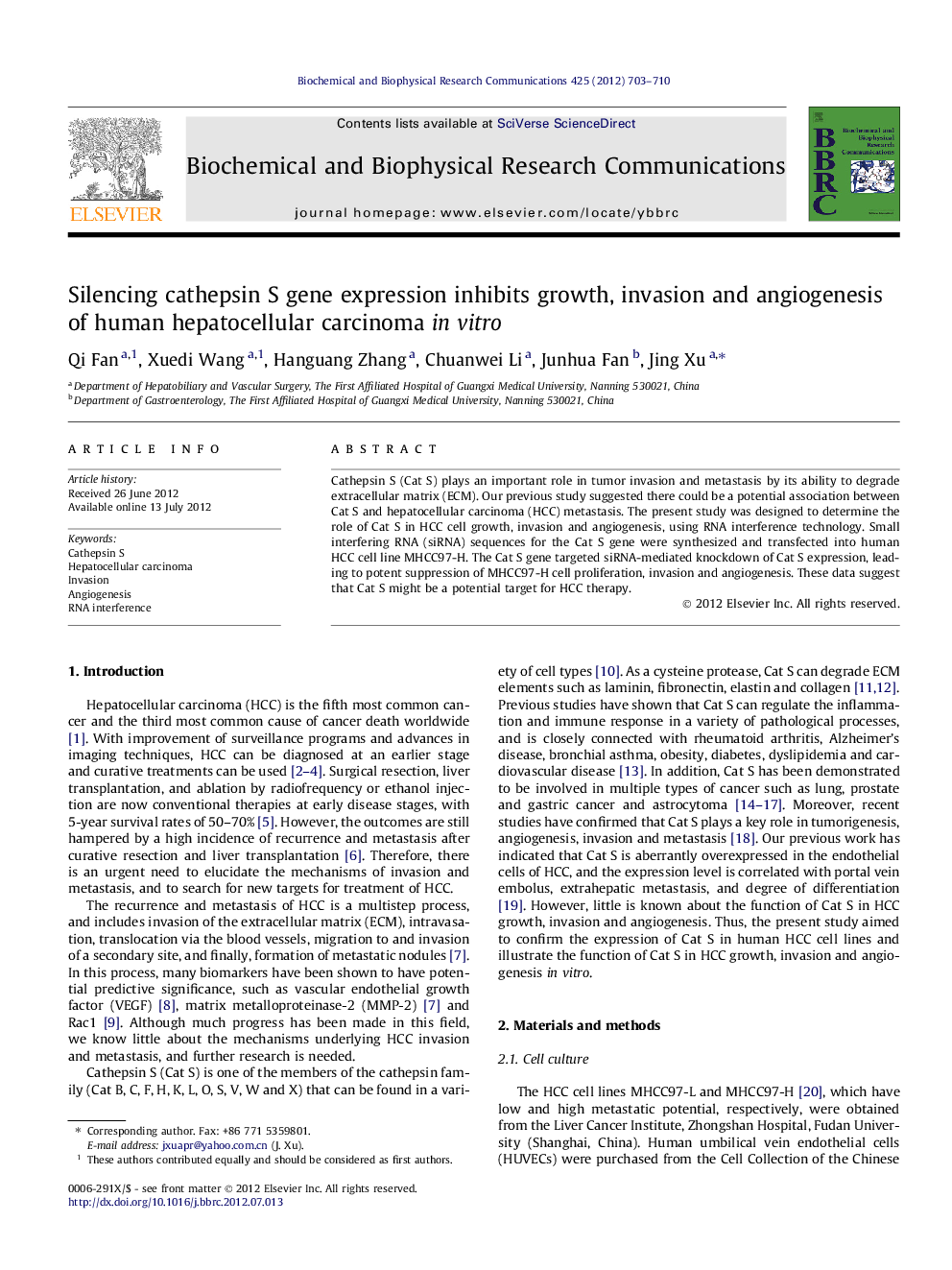| Article ID | Journal | Published Year | Pages | File Type |
|---|---|---|---|---|
| 1929594 | Biochemical and Biophysical Research Communications | 2012 | 8 Pages |
Cathepsin S (Cat S) plays an important role in tumor invasion and metastasis by its ability to degrade extracellular matrix (ECM). Our previous study suggested there could be a potential association between Cat S and hepatocellular carcinoma (HCC) metastasis. The present study was designed to determine the role of Cat S in HCC cell growth, invasion and angiogenesis, using RNA interference technology. Small interfering RNA (siRNA) sequences for the Cat S gene were synthesized and transfected into human HCC cell line MHCC97-H. The Cat S gene targeted siRNA-mediated knockdown of Cat S expression, leading to potent suppression of MHCC97-H cell proliferation, invasion and angiogenesis. These data suggest that Cat S might be a potential target for HCC therapy.
• Cat S is highly expressed in HCC cells with high metastatic potential. • Knockdown of Cat S inhibits growth and invasion of HCC cells. • Knockdown of Cat S inhibits HCC-associated angiogenesis. • Cat S might be a potential target for HCC therapy.
